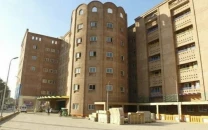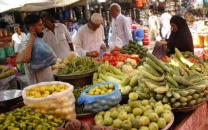Sugar mills need a year to supply power

Sugar mills need a year to supply power
The government has ignored the textile industry, which can produce 1,000 megawatts of electricity, industry sources say. The sugar mills will take more than a year and by November 2011 it will be in a position to provide electricity for the national grid.
Both the sugar and textile sectors have the potential of generating around 3,000 MW, whereas the country is currently facing a shortfall of around 4,500 MW.
If the government completely explores the potential of both sectors, 70 per cent of power outages can be controlled. The cabinet has already given its consent for purchasing electricity from the sugar industry at 11 cents per kilowatt watt hour (Kwh) (Rs9.35 approximately).
The tariff range for projects based on oil is between 13 and 15 cents per kWh, gas 8 cents, coal 8 to 10 cents and hydel projects 8 to 9 cents. Some in government circles believe that the tariff approved for the sugar mills is on the higher side, but the industry says its power will be cheaper than rental power.
“The government would not have to spend a single penny on the infrastructure or capital cost like the rental power projects,” said Pakistan Sugar Mills Association (PSMA) Chairman Iskander M Khan. He said the government without spending a single rupee could get 2,000MW from the sugar industry. He said the rate given to the sugar industry was far less than the rental power while there would be no requirement of gas or furnace oil for producing electricity.
“We will use bagasse (sugarcane waste) for producing electricity, thus there will be no need for coal and furnace oil,” Khan said, adding the line losses would be very low. “Sugar mills are in every part of the country and are very near to city therefore when electricity is produced then it could be easily linked with the nearest grid stations and it would save line loses,” he added. He said other Asian countries get five to six percent of their energy from bagasee-based generation adding India has a vision of approaching 9,000MW through baggase by the year 2017.
The sugar industry sources said the government is bit late in getting electricity from the sugar industry, as it would be in a position to get electricity by November 2011. “We would take around one and half year to give electricity to the national grid,” Khan confirmed. Currently, Faisalabad Electricity Supply Corporation (FESCO) and Peshawar Electricity Supply Corporation (PESCO) are taking electricity from two sugar mills.
FESCO is taking 7MW from Skaharganj Sugar Mill at the rate of Rs 5.74 per Kilowatt- hour. PESCO signed agreement with Almoiz Sugam Mills and buying 15MW at the rate of Rs 5.35.
Besides getting electricity from sugar mills, the textile sector also has enough potential to produce 1,000MW electricity.
The textile industry sources said that the mills are already providing around 200MW and still they have a capacity of producing 800MW. They claimed that the cost of the electricity production by the textile mills would be less than that of Independent Power Producers. All Pakistan Textile Mills Association officials said the textile sector has power plants but still wait for government consent. “Like sugar mills, we also have the capacity to produce power and overcome outages,” said APTMA Secretary Anis Ahmed.



















COMMENTS
Comments are moderated and generally will be posted if they are on-topic and not abusive.
For more information, please see our Comments FAQ